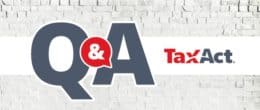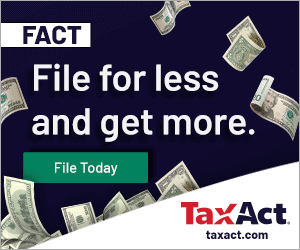7 FAQs About Form 1095-A, Health Insurance Marketplace Statement


File your taxes with confidence.
Your max tax refund is guaranteed.
Updated for tax year 2023.
At a glance:
- You will receive Form 1095-A if you were enrolled in a Marketplace plan from healthcare.gov during the tax year.
- Save this form with your other important tax records.
- Form 1095-A will help you claim the premium tax credit if you qualify.
What is 1095-A Tax Form?
You will receive the 1095-A tax form if you bought health insurance through the government Health Insurance Marketplace. Form 1095-A is a Health Insurance Marketplace Statement that comes in the mail, and you’ll need it to accurately file your 2023 tax return. This form should arrive in your mailbox by mid-February 2024.
Read on to get answers to seven of the most common questions about Form 1095-A.
Why do I need Form 1095-A?
You need Form 1095-A to complete IRS Form 8962, Premium Tax Credit (PTC).
This information provided on this form will help you complete your income tax return, claim premium tax credits, and adjust any tax credit payments.
How do I fill out form 1095-A?
While Form 1095-A is not filed with your tax return, the information is needed to complete Form 8962, Premium Tax Credit. Form 8962 should be filed as part of your tax return.
If you use TaxAct® to prepare your return, our program asks you questions and completes Form 8962 for you if required.
Do I qualify for the premium tax credit?
To qualify for the premium tax credit, you must meet the following criteria:
- You were enrolled in health insurance coverage through the Marketplace for at least one month of the calendar year.
- You did not qualify for an employer-sponsored plan considered affordable for your income level.
- You were not eligible to enroll in a government program such as Medicare, Medicaid, or CHIP.
- You fall within certain household limits (more on that later).
- No one else can claim you as a dependent on their tax return.
- Your filing status is not married filing separately.
How much can I make before I no longer qualify for a premium tax credit?
The premium tax credit phases out for those earning 100% to 400% of the federal poverty level. However, if you live in Hawaii or Alaska, the income limits are higher.
If your income is above the upper limit, you don’t qualify for the premium tax credit.
The following income limits apply to residents of the 48 contiguous states for tax year 2023, based on family size:
- Family size 1: $14,580 up to $58,320
- Family size 2: $19,720 up to $78,880
- Family size 3: $24,860 up to $99,440
- Family size 4: $30,000 up to $120,000
- Family size 5: $35,140 up to $140,560
Typically, the lower your income, the more help you receive through a premium tax credit.
You can reference the 2023 poverty guidelines here for all family sizes and income ranges, including different figures for Hawaii and Alaska residents.
How do I calculate my household income for the premium tax credit?
To determine your household income for this purpose, start with your adjusted gross income (AGI).
Your adjusted gross income includes all your taxable income, reduced by “adjustments,” including deductions and retirement plan contributions.
Add back the following items to calculate your household income:
- Non-taxable Social Security benefits
- Tax-exempt interest income
- Excluded foreign income
TaxAct calculates your household income and allowable credit for you making it easy to determine your income.
If my income disqualifies me for advance credit payments I’ve already received, how much could I have to pay back?
If your income was more than you expected during a year when you received advance credit payments, and your income is above 400% of the federal poverty level, the entire amount of advance credit payments you received must be paid back.
However, if you made more than you expected to, but your income is still below 400% of the federal poverty level, there is a repayment limitation on the amount you must pay back.
For example, if your income is less than 200% of the federal poverty level ($29,160 for an individual in 2023), you will not have to pay back more than $350 of advance credit payments as a single filer (and no more than $700 for other filing statuses).
If your income is less than 300% of the federal poverty level, the maximum amount you will pay back as an individual is $900.
If your income is less than 400% of the federal poverty level, as an individual you won’t have to pay back more than $1,500.
This article is for informational purposes only and not legal or financial advice.
All TaxAct offers, products and services are subject to applicable terms and conditions.






